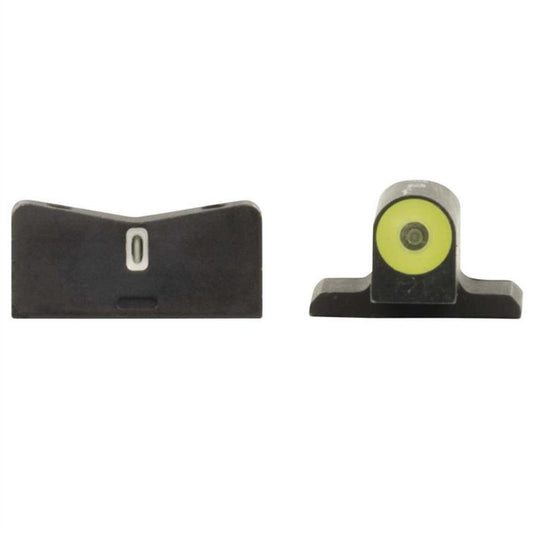

The XS Sight DXT2 Big Dot Sight for Sig P320, P225, P226, P229, and Springfield XD is your go-to accessory when you need accuracy and speed. Designed for shooters who demand precision, this sight features a Tritium-powered front that performs brilliantly in low-light conditions. With a big dot front sight measuring 0.188", you’ll find target acquisition is a breeze. Whether you're in a tactical scenario or enjoying a day at the range, the high-contrast yellow front dot absorbs ambient light, ensuring optimal visibility in any environment.
Furthermore, the low-profile V rear enhances front sight visibility, making it easier to align your shot. You'll appreciate the thoughtful design of the rear sight's ledge for one-handed slide manipulations, ensuring your focus stays on the target. Built from durable CNC machined steel, the DXT2 is not just reliable—it’s backed by a 10-year warranty and a 30-day satisfaction guarantee. Elevate your shooting game with the XS Sight DXT2 Big Dot Sight and experience unmatched performance today!
Features:
- TRITIUM POWERED for enhanced visibility in low-light environments.
- BIG DOT FRONT measures 0.188", optimizing target acquisition speed.
- HIGH-CONTRAST YELLOW front sight glows in the dark, ensuring accuracy.
- LOW-PROFILE V REAR sight design improves visibility of the front sight.
- DOT-THE-"I" SIGHT PICTURE allows for quick aiming and alignment.
- TRITIUM CENTER on rear sight enhances low-light performance (DXT2 only).
- ONE-HANDED SLIDE MANIPULATIONS thanks to the rear sight ledge.
- DURABLE MATERIAL crafted from CNC machined steel for long-lasting reliability.
Technical Specifications Table
| Feature | Specification |
|---|---|
| Compatibility | Sig P320, P225, P226, P229, Springfield XD |
| Front Sight Type | Tritium Powered |
| Rear Sight Type | Available in Tritium or Non-Tritium |
| Front Sight Diameter | 0.188 inches |
| Material | CNC Machined Steel |
| Warranty | 10 Years |
| Dimensions | Standard fit for holsters |
What’s in the Box?
- XS Sight DXT2 Big Dot Sight
- Installation instructions
- Cleaning cloth
Customer Reviews
"These sights are a game-changer! Quick to acquire and perfect for low light." – Alex M.
"I love the big dot feature. Makes aiming so much easier!" – Sarah T.
FAQ
How does the Tritium feature work? Tritium is a radioactive isotope that emits a continuous glow, allowing for visibility in low-light situations without needing any external light source. This is particularly beneficial for night-time shooting or in dark environments.
How durable is the XS Sight DXT2? Made from CNC machined steel, this sight is designed to withstand harsh conditions and heavy use, ensuring you can rely on it in any situation.
Similar Models
If you're interested in exploring more options, check out our extensive lineup of XS sights. Models like the XS Standard Dot Sight and XS DXT2 Standard Sight offer additional features tailored for different shooting needs. Explore our full collection for the perfect optics to enhance your shooting experience.
You May Also Like
Here’s some of our most similar products people are buying. Click to discover trending style.






